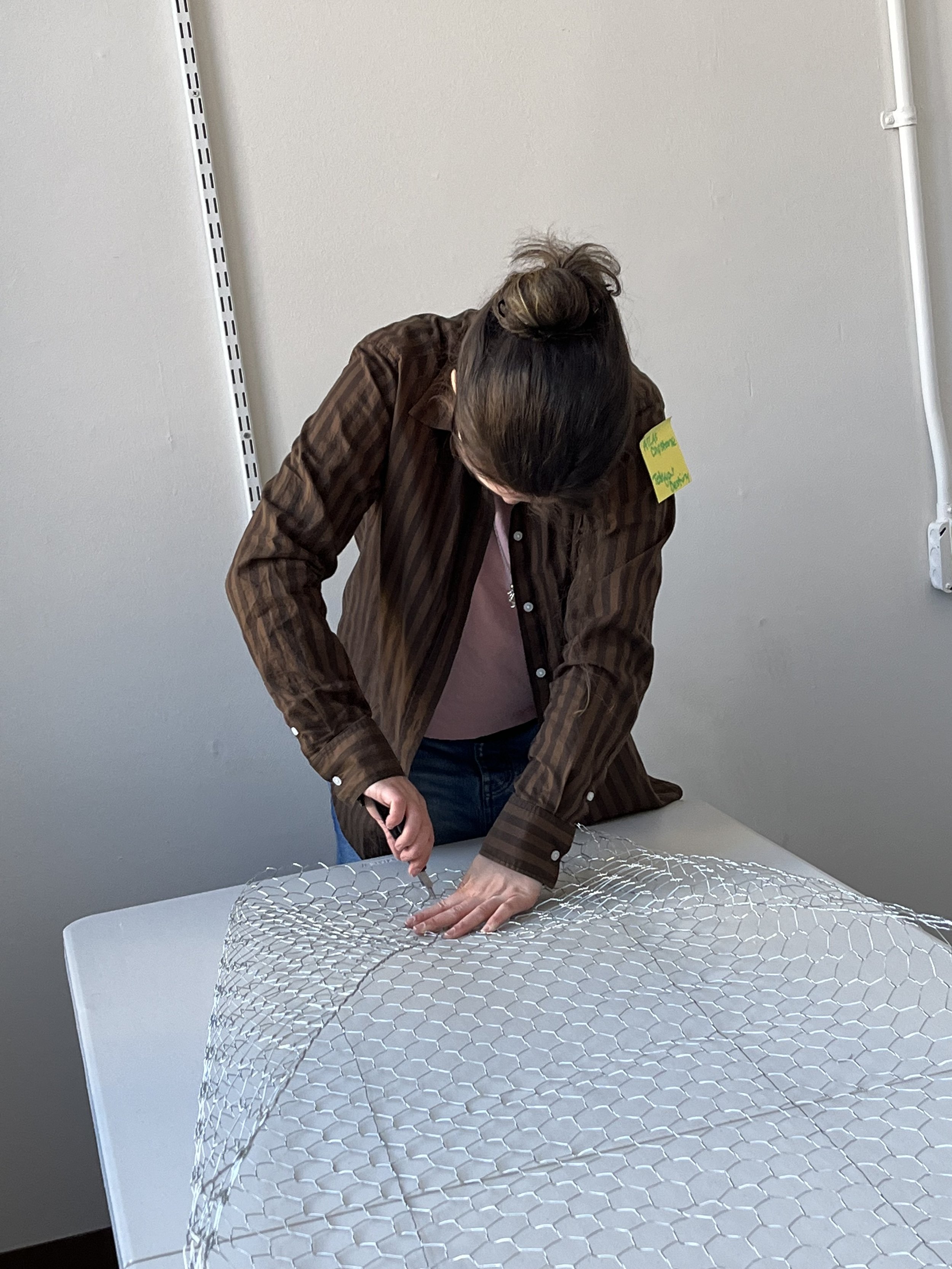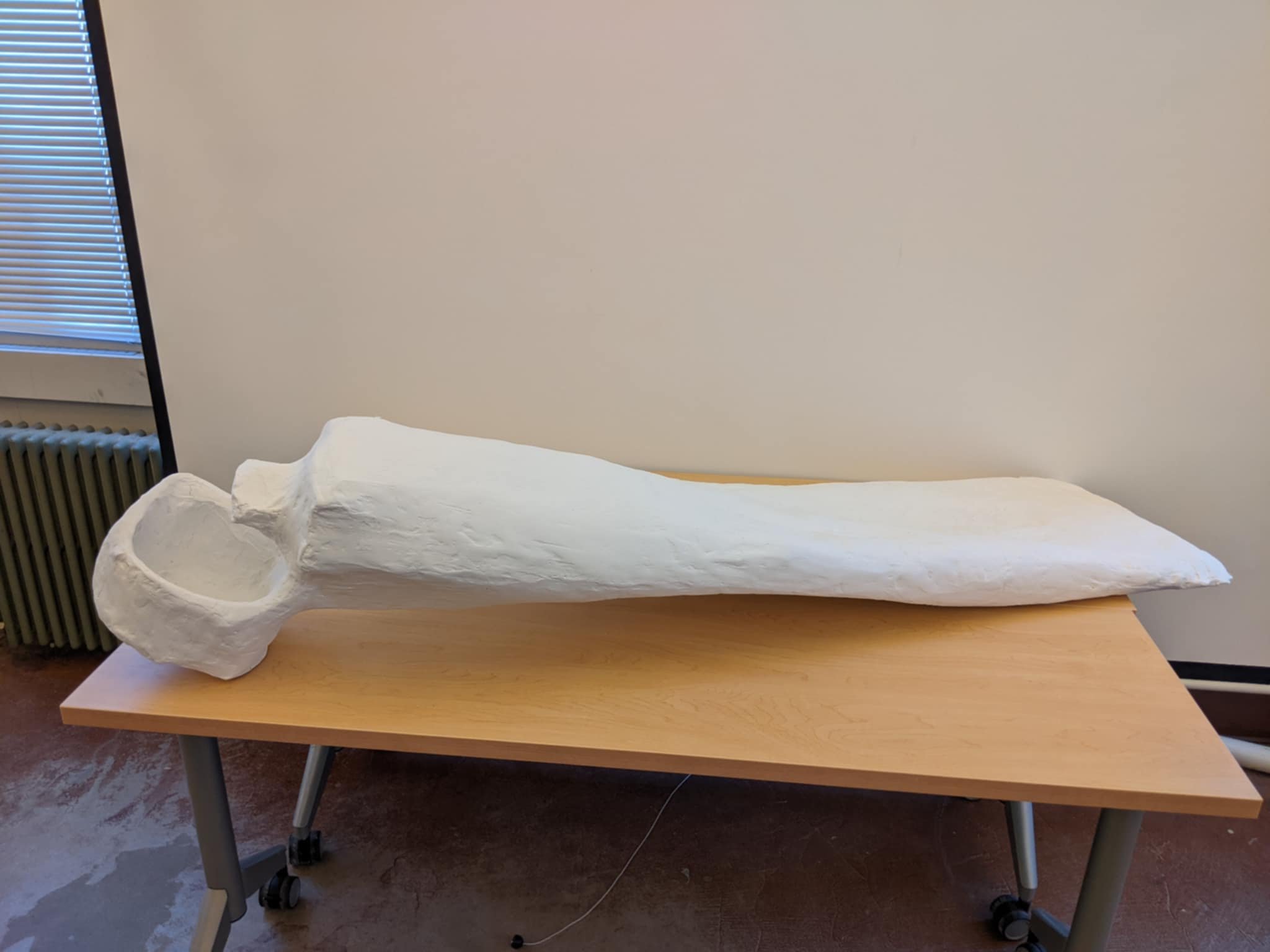Sensorium
Beginning in the Fall of 2024, Destiny Cool and Tehya Laughlin came together with the goal to create an art installation that expands the perspective and understanding of their audience. They originally targeted specific topics in neurodiversity. Through discussions, planning, and research, they decided to use sculpture and videography. Mentors such as Anna Tsouhlarakis and Renee Boos, and faculty such as Annie Margaret helped Destiny and Tehya build their goals and understanding of story and impact.
Sensorium focuses on the universal sensory experience of the bathroom. Every person in the audience can relate, but every person also has different thresholds for what stimuli cause sensory overload and why. Sensorium heightens the auditory and visual senses, with fast cuts, evocative sounds, and projection that takes over the primary area of vision. When the viewer enters the installation space, all they see and hear is Sensorium. This onset of stimuli evokes emotions of panic, overwhelmingness, and anxiety. However, as Sensorium progresses and concludes, the audience emotionally progresses as well.
Sculpture
Weeks 1-3: Testing
In these weeks Tehya gathered materials for the sculpture, and completed a small test sculpture that used the process and materials in their planned capacity. Tehya learned the tips and tricks to make the materials work. She also helped Destiny capture video footage, collaborating as director, camera operator, and actor.
Weeks 4-6: Understructure
Tehya completed the chicken wire understructures for the sculptures during weeks 4 to 6. She also helped with video production by gathering free sound samples of noises Destiny and Tehya planned to have in their video. Within these weeks, Tehya also met with mentor Anna Tsouhlarakis to gather feedback on the start of both the video and sculpture.
Weeks 6-8: Paper Mache
Also in week 6, Tehya started the paper mache on top of the chicken wire. Paper mache continued to week 8, where she did a Mod-Podge hard coat layer on top of the paper mache to help water seal the paper. Destiny and Tehya also created a survey aimed to gather feedback on their project.
Weeks 9-10: Joint Compound
Since the paper mache was complete, Tehya applied joint compound to the sculptures in these weeks. Destiny and Tehya also prepared scripts and slides for a presentation on the state of the project, Sensorium.
Weeks 11: Sanding and Painting
The final touches to the sculptures were completed in week 11. Destiny and Tehya worked to sand the sculptures, and then paint the sculptures white.
Video and Projection
Weeks 1-3: Shooting and Early Post-production
For the first few weeks, Destiny focused on capturing the footage outlined in the storyboard that Tehya and Destiny had previously created in the fall of 2024. Destiny’s main duties were co-director, camera operator, and primary video editor.
She then compiled the footage into a low-fidelity video outline in Premiere Pro with little editing. The first iteration of the video was to structure the story progression and experiment with the emotional impact they wanted to evoke in their audience.
Weeks 4-6: Clarifying Editing Style
In the following weeks, Destiny created two more iterations of the video that incorporated heavier experimental editing and sound integration in collaboration with Tehya. The second iteration focused on the pacing, uncomfortability, and stylization. The third iteration increased the fidelity of the video with the addition of various sounds, such as the faucet running, anxious breathing, and the subtle heartbeat that fluctuated throughout.
In addition to editing, Destiny and Tehya scheduled and met with Chase Luoma, a mental health counselor at NorthRange Behavioural Health, and Renee Boos, the founder and director of possibility at the Lafayette Neurodiversity Community Center, to discuss the impact, relevance, and feedback of their art installation.
Weeks 8-11: High Fidelity Video Editing
Finally, Destiny and Tehya collaborated on the composition of the art installation and on testing the projection of the video onto the sculptural pieces. The final version of the video was completed and published on YouTube.















